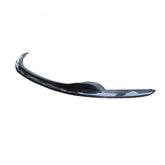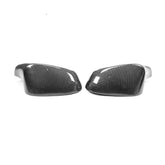As environmental concerns continue to influence consumer choices, the automotive industry has responded with more sustainable products, including eco-friendly tyres. These tyres are designed to reduce environmental impact without sacrificing performance. Here’s how eco-friendly tyres strike a balance between enhancing your driving experience and preserving the planet.

1. What Makes a Tyre Eco-Friendly?
Eco-friendly tyres are constructed with several key considerations:
- Sustainable Materials: Manufacturers increasingly use natural rubbers, recycled plastics, and other renewable materials to reduce dependency on petroleum-based products.
- Low Rolling Resistance: These tyres are designed to minimize the energy wasted as heat when the tyre rolls during driving. Lower rolling resistance means the engine works less hard, improving fuel efficiency and reducing emissions.
- Longevity: Durable materials extend the lifespan of tyres, reducing the frequency of tyre replacement and, consequently, the environmental impact associated with tyre production and disposal.
2. Benefits of Eco-Friendly Tyres
- Reduced Carbon Footprint: By improving fuel efficiency and using greener materials, these tyres help lower your vehicle’s overall carbon emissions.
- Cost-Effective: Although eco-friendly tyres may come with a higher upfront cost, their ability to improve fuel efficiency can save money on fuel expenses over time.
- Enhanced Performance: Modern eco-friendly tyres provide excellent grip and handling that meet, and sometimes exceed, the performance levels of conventional tyres.
3. Performance Considerations
While traditional performance tyres are optimized for speed and handling, eco-friendly tyres are engineered to balance performance with environmental benefits. This does not mean a compromise in safety or enjoyment. Innovations in tread patterns, rubber compounds, and structural design ensure that these tyres deliver reliable performance in various driving conditions.
4. Popular Eco-Friendly Tyre Options
Several manufacturers are leading the way in eco-friendly tyre technology:
- Michelin Energy Saver A/S: Known for its fuel-saving capabilities, this tyre uses a special tread rubber to keep the tyre cooler, reducing energy dissipation.
- Goodyear Assurance Fuel Max: This tyre features a fuel-saving tread compound that reduces energy loss as the tyre rolls. It also offers confident wet and dry traction.
- Bridgestone Ecopia EP422 Plus: Designed for long life and fuel efficiency, the Ecopia combines low rolling resistance with excellent wet and dry performance.
5. Choosing the Right Eco-Friendly Tyres
When selecting eco-friendly tyres, consider the following:
- Vehicle Type and Size: Ensure the tyres are appropriate for your vehicle’s make and model.
- Driving Conditions: Consider the typical weather and road conditions you encounter. Some eco-friendly tyres are better suited for wet conditions while others are ideal for dry roads.
- Certifications: Look for certifications or ratings that indicate low rolling resistance and other eco-friendly attributes.
6. The Future of Eco-Friendly Tyres
The push towards sustainability is driving continuous innovation in tyre technology. Future developments are expected to leverage even more advanced materials and manufacturing processes that further reduce environmental impact without compromising tyre performance.
Conclusion
Eco-friendly tyres represent a significant step forward in making everyday driving more sustainable. By choosing these tyres, drivers can contribute to a healthier planet while enjoying the benefits of advanced tyre technology. As more drivers adopt eco-friendly tyres, we move closer to a more sustainable future, proving that performance and environmental responsibility can go hand in hand.










